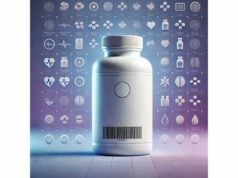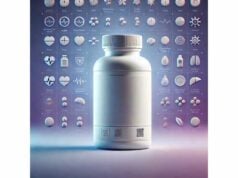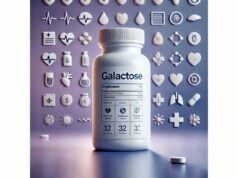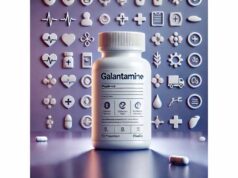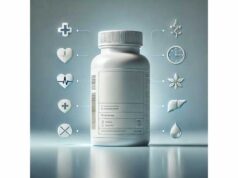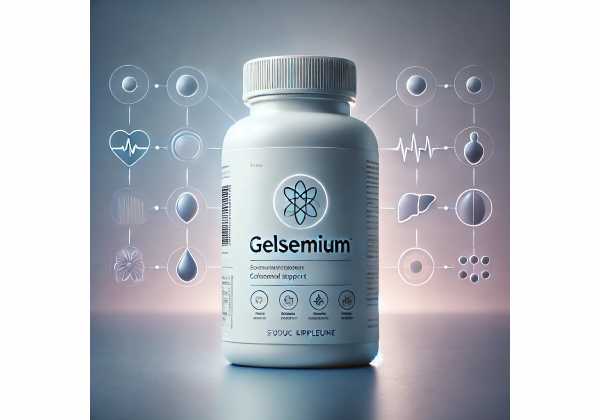
Gelsemium is a flowering vine whose extracts contain potent indole alkaloids such as gelsemine and gelsenicine. These compounds act on inhibitory receptors in the nervous system and have been explored for potential calming (anxiolytic) effects in animal research. At the same time, Gelsemium species—especially Gelsemium elegans in Asia and Gelsemium sempervirens in the Americas—are highly toxic; accidental and intentional poisonings have been documented, sometimes with severe outcomes. You will see Gelsemium most commonly in homeopathic, ultra-dilute products; ingesting measurable (non-homeopathic) amounts is unsafe outside of controlled clinical settings. This guide explains what Gelsemium is, how it is thought to work, where the evidence stands, the forms people use today, practical safety guidance, and why no evidence-based “therapeutic dose” of active Gelsemium alkaloids can be recommended.
Key Insights
- Animal studies suggest Gelsemium alkaloids can reduce anxiety-like behavior via inhibitory receptors.
- The plant is highly toxic; measurable doses can cause bradycardia, respiratory failure, and death.
- No clinically established therapeutic dose; avoid non-homeopathic ingestion (0 mg total alkaloids recommended).
- Children, pregnant or breastfeeding people, those with heart, lung, or neuromuscular disease, and anyone taking sedatives should avoid Gelsemium.
Table of Contents
- What is Gelsemium and how does it work?
- Benefits and limits in humans
- How people use it today
- Dosage: what is safe and what is not
- Safety risks, side effects, who should avoid
- What the science says overall
What is Gelsemium and how does it work?
Gelsemium is a small genus of evergreen vines native to warm regions of the Americas and Asia. The two species most relevant to human health are Gelsemium sempervirens (also called Carolina jessamine, native to the southeastern United States) and Gelsemium elegans (native to East and Southeast Asia). Despite their elegant blooms, both plants are poisonous. Their seeds, leaves, and roots house an array of indole alkaloids—most notably gelsemine and gelsenicine—that interact with inhibitory neurotransmitter systems.
In laboratory and animal models, gelsemine can modulate glycine receptors and, to a lesser extent, GABAA receptors. Glycine receptors are chloride channels that dampen neuronal excitability. When agonized, neurons become less likely to fire, which can translate into muscle relaxation and reduced anxiety signals in animal behavior tests. This receptor profile helps explain why low experimental doses can appear “calming” while higher exposure can depress respiration and heart rate. Small changes in concentration may shift the effect from subtle sedation into dangerous central nervous system depression.
The two species also differ in public-health relevance. G. elegans features prominently in poisoning reports across China and neighboring countries; even small ingestions have led to severe toxicity, reflecting a high alkaloid burden. G. sempervirens, common in horticulture in North America, has caused poisonings when misidentified or mishandled. These realities shape how modern products are offered: conventional herbal extracts with measurable Gelsemium alkaloids are rarely marketed in reputable venues, whereas homeopathic preparations—so dilute they contain no detectable alkaloids—are widely sold.
Importantly, pharmacology does not equal clinical utility. Although alkaloids show receptor activity, there is no high-quality evidence that measurable doses of Gelsemium improve anxiety, pain, or other conditions in humans. Toxicity appears at exposures far below what would be required to run rigorous dose-finding trials safely. That’s why the only commonly available consumer forms are homeopathic dilutions, which by design do not deliver pharmacologically active amounts.
Finally, quality considerations matter. Botanical identity, harvest conditions, and extraction methods can swing alkaloid profiles dramatically. Analytical studies show that gelsenicine is among the most toxic constituents, and even trace contamination in mislabeled products would be unacceptable. Because of this narrow margin between any theoretical effect and clear harm, Gelsemium should be approached first and foremost as a poisonous plant, not a supplement.
Benefits and limits in humans
What potential “benefits” exist for Gelsemium come almost entirely from preclinical work. In mice, purified gelsemine and related alkaloids have produced anxiolytic-like effects in behavioral assays. Mechanistic studies point to modulation of glycine receptors in the spinal cord and brainstem, which could influence downstream neurosteroid signaling and stress reactivity. Some experiments also explore anti-inflammatory or analgesic signals, though these lines of research are early and inconsistent.
When translating to humans, the ledger changes. There are no robust, peer-reviewed randomized controlled trials demonstrating that measurable doses of Gelsemium alkaloids are effective for any psychiatric, neurological, or pain condition. The chief barrier is safety: the concentrations that meaningfully engage inhibitory receptors are close to those that suppress respiration or cause life-threatening bradycardia. Case reports document rapid onset of dizziness, double vision, slurred speech, limb weakness, hypotension, and respiratory depression after ingestion—signs that mirror the drug’s pharmacology at inhibitory chloride channels. This leaves essentially no therapeutic window for general consumers.
What about homeopathic products labeled “Gelsemium”? These are ultra-diluted solutions or pellets prepared by serial dilution and shaking (succussion). By the time you reach common strengths like 30C, there are no expected molecules of the original alkaloids present. Advocates cite observational reports and small laboratory studies using high dilutions. However, when independent groups pool clinical trials across conditions, homeopathy as a category has not shown consistent benefits beyond placebo, and physiological plausibility is lacking at such dilutions. Consumers should not assume that the word “Gelsemium” on a homeopathic label reflects the pharmacology described above; the products do not contain measurable alkaloids and should not be used to self-treat serious symptoms.
If you are considering calming agents or support for stress, there are better-studied options. Non-drug strategies like cognitive-behavioral therapy, structured breathwork, sleep optimization, and exercise have measurable benefits and excellent safety. For supplements, lavender oil standardized to Silexan, L-theanine, or magnesium (for deficiency) have modest evidence in specific contexts and far wider safety margins. For diagnosed anxiety disorders, evidence-based care involves psychotherapy and, when appropriate, prescription medications under medical supervision.
In short: preclinical studies illuminate how Gelsemium might act in the nervous system, but that knowledge underscores danger rather than opportunity. Without compelling human data and with a razor-thin safety margin, Gelsemium alkaloids do not presently qualify as a practical or advisable supplement.
How people use it today
Gelsemium appears in three main ways in modern life:
- Homeopathic pellets or liquids carrying the name “Gelsemium.” These are prepared by serial dilutions that exceed Avogadro’s limit, meaning no detectable alkaloids remain. People use these products for situational anxiety, stage fright, or flu-like malaise based on traditional homeopathic doctrine rather than pharmacology. Because they contain no measurable Gelsemium, their effects—positive or negative—reflect placebo responses, expectations, or excipients. Although such products usually avoid alkaloid toxicity, they can still mislead consumers into delaying appropriate medical care, and rare adverse reactions to inactive ingredients are possible.
- Ornamental or wild plants (G. sempervirens in gardens; G. elegans in the wild). Poisonings often occur when parts of the plant are mistaken for edible or medicinal herbs. Leaves and roots can be bitter; teas, decoctions, or “herbal wines” made from misidentified material pose grave risks. Cultural practices that involve foraging increase the danger when look-alike plants grow nearby. Public health advisories emphasize correct plant identification and avoidance of self-prepared extracts.
- Forensic and clinical toxicology. Clinicians, laboratorians, and researchers encounter Gelsemium in the context of poisonings. Modern methods (e.g., LC-MS/MS or high-resolution mass spectrometry) can detect gelsemine, gelsenicine, and related alkaloids in blood, urine, or gastric contents. This analytical progress helps confirm diagnoses and guide supportive care, but it does not translate into safe consumer use.
There are also online “extracts” or powders marketed covertly. These products raise multiple red flags: uncertain species identity, inconsistent alkaloid profiles, and no clinical oversight. Adverse events from such purchases are under-reported and likely underestimated.
If you see “Gelsemium” in an ingredient list, take the time to determine what form it is:
- Homeopathic (ultra-dilute): typically labeled with “C” or “X” potencies and sold over the counter. These products do not supply pharmacologically active alkaloids; any perceived effects are not due to Gelsemium chemistry.
- Herbal extract or raw plant: avoid ingestion. There is no safe, standardized, or evidence-based dose for the active plant, and toxicity can be rapid and severe.
- Topical products: rare, usually homeopathic creams. Avoid any that contain measurable plant extract; dermal absorption may still occur, and accidental hand-to-mouth transfer is possible.
Finally, storage and household safety matter. Keep any Gelsemium-named products away from children and pets, and never propagate G. sempervirens where children could chew leaves or flowers.
Dosage: what is safe and what is not
For active Gelsemium alkaloids, no therapeutic dose has been established for humans, and no self-medication is recommended. The pharmacology that produces anxiolytic-like signals in animals sits adjacent to life-threatening toxicity in people. Because the difference between a “physiological” and a dangerous exposure can be extremely small—and because plant material varies in alkaloid concentration—any mg-level ingestion of non-homeopathic Gelsemium is unsafe outside of a regulated clinical trial or hospital setting.
Practical implications:
- Recommended intake of active alkaloids: 0 mg. Do not ingest teas, tinctures, capsules, or powders that contain measurable Gelsemium constituents. Avoid DIY extractions entirely.
- Homeopathic products provide 0 mg total alkaloids at typical potencies. If someone elects to use such a product, dosing follows the label (for example, pellets dissolved under the tongue). While toxicity from alkaloids is not a concern with ultra-dilute products, do not rely on them to treat serious symptoms such as chest pain, severe anxiety attacks, or neurological deficits.
- Timing and duration: There is no evidence-based regimen for active Gelsemium. If a homeopathic product is tried for a minor, self-limited complaint, stop if no improvement occurs within a few days and seek medical guidance for persistent or worsening symptoms.
- Co-administration concerns: Combining Gelsemium (in any measurable form) with sedatives, opioids, alcohol, benzodiazepines, barbiturates, sleep medications, or muscle relaxants could amplify central nervous system depression. Even topical exposure from concentrated extracts could be hazardous in vulnerable individuals. Do not attempt to “stack” Gelsemium with calming herbs like kava, valerian, or passionflower.
- Special populations: Absolutely avoid active Gelsemium in pregnancy and breastfeeding (risk to the fetus or infant is unknown and harm could be substantial), children and adolescents, older adults, and anyone with respiratory disease, sleep apnea, conduction disorders, bradycardia, myasthenia gravis, or seizure disorders. People with low blood pressure or those taking beta-blockers, calcium-channel blockers, or other AV-node–active drugs face heightened risk.
- If exposure occurs: Treat it as a medical emergency. Symptoms can start within minutes to hours and may escalate quickly. Do not induce vomiting. Seek urgent care for evaluation and cardiorespiratory monitoring.
To reiterate: Gelsemium is not like chamomile or lemon balm. It is a poisonous plant with modern analytical science focused on detecting it in poisonings—not on dosing it for wellness. Your safest “dosage” for active Gelsemium is none.
Safety risks, side effects, who should avoid
Acute toxicity. Ingestion of G. elegans or G. sempervirens plant parts or concentrated extracts can precipitate rapid neurological and cardiopulmonary depression. Reported symptoms include dizziness, blurred or double vision, ptosis (drooping eyelids), slurred speech, ataxia, limb weakness, excessive salivation, nausea, vomiting, hypotension, bradycardia, and potentially apnea or respiratory failure. Severe cases require airway protection, oxygen or ventilation, intravenous fluids, and intensive care monitoring. There is no specific antidote; management is supportive, with careful attention to breathing and circulation while the body clears the alkaloids.
Delayed or prolonged effects. Some patients experience extended recovery times with lingering neurological complaints, autonomic instability, or mood changes. Because exposure levels are rarely known, clinicians rely on serial examinations and targeted toxicology tests when available.
Routes of exposure. Poisoning usually follows oral ingestion, but concentrated extracts could theoretically pose risks through mucous membranes or broken skin. Cross-contamination—such as using a cutting board for both Gelsemium plant material and food—has also been implicated in accidental exposures.
Drug and alcohol interactions. Any CNS depressant (alcohol, benzodiazepines, sedating antihistamines, opioids, sleep medicines) can worsen respiratory suppression and impair protective reflexes. Combining agents that slow heart rate or AV conduction (e.g., beta-blockers, certain calcium-channel blockers, digoxin) with Gelsemium alkaloids further increases danger.
Contraindications. The following groups should avoid all forms with measurable alkaloids and approach even homeopathic products cautiously due to the risk of masking symptoms or product confusion:
- Pregnancy or breastfeeding
- Infancy, childhood, or adolescence
- Older adults with frailty or polypharmacy
- Cardiac conduction disease, bradycardia, heart failure, or low baseline blood pressure
- Chronic respiratory disease (COPD, asthma with severe exacerbations, sleep apnea)
- Neuromuscular weakness (myasthenia gravis) or seizure disorders
- Renal or hepatic impairment that could alter toxin clearance
Allergy and sensitivities. True allergic reactions to homeopathic pellets are rare but may occur due to lactose or other excipients. Contact dermatitis from handling ornamental plants is uncommon compared with toxicity from ingestion, but gloves and handwashing are prudent.
Product quality and mislabeling. Online markets may sell “extracts” without reliable species verification or alkaloid testing. Adulteration, contamination, and erroneous labeling (e.g., confusing Gelsemium with unrelated herbs) increase the risk of severe poisoning.
When to seek immediate help. Any neurological symptoms (confusion, weakness, slurred speech), visual disturbance, difficulty breathing, fainting, chest pain, or sustained vomiting after possible Gelsemium exposure warrants emergency evaluation. Bring the product or plant sample if available; this helps clinicians and toxicologists identify the exposure quickly.
Bottom line: consider Gelsemium a high-risk plant. There is no safe consumer margin for active extracts, and poisonings—sometimes severe—are documented. Prevention, not dosing, is the right strategy.
What the science says overall
The modern evidence base for Gelsemium paints a clear picture:
- Mechanism is established in principle. Multiple laboratory studies show that gelsemine and related alkaloids modulate inhibitory neurotransmission, especially glycine receptors. This can reduce neuronal excitability and, in animals, produce anxiolytic-like behaviors.
- Clinical utility is unproven and unlikely with active doses. No rigorous human trials demonstrate safe, effective use of measurable Gelsemium alkaloids for anxiety, pain, or other conditions. The pharmacodynamic target lies perilously close to life-threatening toxicity. Case reports repeatedly describe rapid cardiorespiratory compromise after ingestion.
- Homeopathic products do not contain active alkaloids. They are ultra-dilute and, while generally not toxic from alkaloids, have not shown consistent benefits beyond placebo for medical conditions. Using them in place of evidence-based care can delay appropriate treatment.
- Public health focus is detection and management, not promotion. Advances in mass spectrometry and toxicology support faster diagnosis of poisonings and forensic confirmation. Reviews and case series emphasize education, plant identification, and supportive clinical protocols.
- Research gaps remain, but they are academic. Pharmacologists continue to map receptor interactions and explore structure–activity relationships under controlled conditions. Translating this into consumer supplements is improbable because safety margins are too narrow and inter-plant variability too large. If any clinical development ever emerges, it will likely involve new derivatives with altered toxicity profiles, not crude plant extracts.
For readers seeking practical direction: if your goal is to manage stress or anxiety, prioritize proven, low-risk options—therapeutic techniques, lifestyle adjustments, and, when indicated, clinician-guided treatments. If you grow ornamental Gelsemium, label it clearly and keep it out of reach of children and pets. And if anyone in your community forages or prepares traditional herbal mixtures, share this article to raise awareness about look-alike risks and the need for precise plant identification.
References
- Caution on the severe damage of Gelsemium elegans poisoning: a case report on family poisoning and systematic review 2025 (Systematic Review)
- Molecular Pharmacology of Gelsemium Alkaloids on Inhibitory Receptors 2024
- Study on detection methods for Gelsemium elegans alkaloids, and applications 2024
- Suppressive Effects of Gelsemine on Anxiety-like Behaviors in a Mouse Model 2022
- Functional modulation of glycine receptors by the alkaloid gelsemine 2016
Disclaimer
This information is educational and is not a substitute for personalized medical advice, diagnosis, or treatment. Gelsemium is a poisonous plant. Do not ingest non-homeopathic Gelsemium products. If you suspect exposure or experience symptoms after possible contact, seek emergency medical care immediately. Always consult a qualified healthcare professional before starting, stopping, or replacing any treatment.
If you found this article useful, please consider sharing it on Facebook, X (formerly Twitter), or your favorite platform, and follow us for more evidence-based guides. Your support helps us continue creating high-quality health content.

